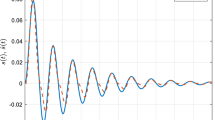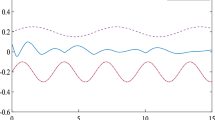Abstract
In this paper, we first reveal the analytical structure of a simple Takagi–Sugeno (TS) fuzzy PI controller relative to the linear PI controller. The fuzzy controller consists of two linear input fuzzy sets, four TS fuzzy rules with linear consequent, Zadeh fuzzy logic AND and the centroid defuzzifier. We prove that the fuzzy controller is actually a nonlinear PI controller with the gains changing with process output. Utilizing the well-known small Gain Theorem in control theory, we then derive sufficient conditions for global stability of the fuzzy control systems involving the TS fuzzy PI controller. Finally, as an application demonstration, we apply the fuzzy PI controller to control issue temperature, in computer simulation, during hyperthermia therapy. The relationship between heat energy and tissue temperature is represented by a linear time-varying model with a time delay. The sufficient conditions for global stability are used to design a stable fuzzy control system. Our simulation results show that the fuzzy PI control system achieves satisfactory temperature control performance. The control system is robust and stable even when the model parameters are changed suddenly and significantly.
Similar content being viewed by others
Author information
Authors and Affiliations
Rights and permissions
About this article
Cite this article
Ding, Y., Ying, H. & Shao, S. Structure and stability analysis of a Takagi–Sugeno fuzzy PI controller with application to tissue hyperthermia therapy. Soft Computing 2, 183–190 (1999). https://doi.org/10.1007/s005000050051
Issue Date:
DOI: https://doi.org/10.1007/s005000050051




